My November Reading Wrap-Up went up on YouTube at the beginning of the week, but I held off on its Substack quotation round-up counterpart until the end of the week in the hopes that I would have some additional reads to tell you about - and, in fact, I do!
Prince Caspian and The Voyage of the Dawn Treader by C.S. Lewis
“Wouldn't it be dreadful if some day in our own world, at home, men start going wild inside, like the animals here, and still look like men, so that you'd never know which were which.”
My dad has always been a bit of a Tolkien snob, and I think this must be why I skipped the Chronicles of Narnia growing up, but, as several on YouTube have commented, Narnia is a series to read and re-read at every age! The above line is great and has a bit of the flavor of Perelandra and That Hideous Strength about it, but it was not in fact my favorite passage from Prince Caspian - I’ve already been weaving the quotations that struck me the most into a forthcoming Substack post, so stay tuned for that!
“Most of us know what we should expect to find in a dragon’s lair, but, as I said before, Eustace had read only the wrong books. They had a lot to say about exports and imports and governments and drains, but they were weak on dragons.”
Another comment on YouTube was that I would enjoy Eustace’s transformation in The Voyage of the Dawn Treader. I’m only halfway through but hoping to finish it soon and excited to make more progress in Narnia!
Tree and Leaf by J.R.R. Tolkein
“Max Muller’s view of mythology as a ‘disease of language’ can be abandoned without regret. Mythology is not a disease at all, though it may like all human things become diseased. You might as well say that thinking is a disease of the mind. It would be more near the truth to say that languages, especially modern European languages, are a disease of mythology. But Language cannot, all the same, be dismissed. The incarnate mind, the tongue, and the tale are in our world coeval.”
I didn’t actually plan in advance to make November an Inklings month, but Tolkien and Lewis somehow turned out to be my main reads, and you can’t go wrong with those two! Tree and Leaf particularly impressed me: it’s a collection that includes the poem “Mythopoeia” and the short story “Leaf by Niggle,” both of which I was already familiar with and love. They are absolutely worth a read and then a re-read, “Mythopoeia” especially for anyone engaged in creative work.
The term “content creator” is often used on the Internet, but I think I will now try to always use “sub-creator” instead. Tolkien encapsulates the essence of creative endeavors so beautifully in his philosophy of sub-creation, which he explores not only in “Mythopoeia” but also the more didactic titular essay, “Tree and Leaf.”
We need, in any case, to clean our windows; so that the things seen clearly may be freed from the drab blur of triteness or familiarity - from possessiveness. Of all faces those of our familiares are the ones both most difficult to play fantastic tricks with, and most difficult really to see with fresh attention, perceiving their likeness and unlikeness: that they are faces, and yet unique faces. This triteness is really the penalty of ‘appropriation’: the things that are trite, or (in a bad sense) familiar, are the things that we have appropriated, legally or mentally. We say we know them. They have become like the things which once attracted us by their glitter, or their color, or their shape, and we laid hands on them, and then locked them in our hoard, acquired them, and acquiring ceased to look at them…[Creative fantasy] may open your hoard and let all the locked things fly away like cage-birds. The gems all turn into flowers or flames, and you will be warned that all you had (or knew) was dangerous and potent, not really effectively chained, free and wild; no more yours than they were you.”
Here are just a few more to whet your appetite…
“All three things: independent invention, inheritance, and diffusion, have evidently played their part in producing the intricate web of Story. It is now beyond all skill but that of the elves to unravel it.”
“But in Faerian drama you are in a dream that some other mind is weaving, and the knowledge of that alarming fact may slip from your grasp.”
“It is not possible to preserve for long an oasis of sanity in a desert of unreason by mere fences, without actual offensive action (practical and intellectual).”
That last one has really stood out in my mind: be sure to watch the video to hear the full context of that passage!
Nordic Tales: Folktales from Norway, Sweden, Finland, Iceland, and Denmark Illustrated by Ulla Thynell
“When they got to where the north wind lived he was so wild and unruly that cold gusts were felt a long way off. “What do you want?” he shouted from far away, but still it made them shiver all over.—”Oh, you needn’t be so very harsh,” said the south wind, “it’s I, your own brother, and then I have got her with me who should have had the prince who lives in that castle which lies east of the sun and west of the moon, and she wants to ask you if you have ever been there and if you can tell her the way. She is so very anxious to find him again.”—”Well, yes, I do know where it is,” said the north wind; “I once blew an aspen leaf thither, but I was so tired that I wasn’t able to blow for many days after.” ”
After reading Tolkien discourse on the art of fairy-stories, it seemed only appropriate to pick up some fairy-stories! Tolkien was inspired by Nordic legends in his own work, and there was a scene in one of these stories about a ring cast in the fire that I felt could have been a pre-echo of Lord of the Rings. This gorgeous Chronicle Books collection has a wispy, full-page illustration at the start of each tale, and the style of the paintings matches the style of the stories so well. I recently discovered that a Celtic Tales collection exists in the same series, and it’s totally going on my Christmas list.
A Christmas Carol by Charles Dickens
“No wind that blew was bitterer than he, no falling snow was more intent upon its purpose, no pelting rain less open to entreaty. Foul weather didn’t know where to have him. The heaviest rain, and snow, and hail, and sleet, could boast of the advantage over him in only one respect. They often “came down” handsomely, and Scrooge never did.”
“Tree and Leaf” talked about the idea of the “soup” of a story as it is served up by its author or teller and the “bones” of past archetypes, legends, and sources that the soup was boiled in, and Tolkien wrote so beautifully about the way “the Pot of Soup, the Cauldron of Story, has always been boiling, and to it have continually been added new bits, dainty and undainty.” A Christmas Carol seems like a pretty chunky bit in our cultural soup and a bone out of which other broths have been born, at least in the form of film adaptations!
I don’t know how it took me this long to read the book itself, because I’m of course familiar with the plot, and I suppose it’s not surprising to find that many of Dickens’ beautiful turns of phrase, like the wonderful reflections on the weather above, didn’t quite make it into the Scrooge McDuck version…although, in defense of the animation, it does capture some of the whimsy and humor Dickens breathes into the tale. But the original certainly goes deeper.
“There are many things from which I might have derived good, by which I have not profited, I dare say,” returned the nephew. “Christmas among the rest. But I am sure I have always thought of Christmas time, when it has come round—apart from the veneration due to its sacred name and origin, if anything belonging to it can be apart from that—as a good time; a kind, forgiving, charitable, pleasant time; the only time I know of, in the long calendar of the year, when men and women seem by one consent to open their shut-up hearts freely, and to think of people below them as if they really were fellow-passengers to the grave, and not another race of creatures bound on other journeys. And therefore, uncle, though it has never put a scrap of gold or silver in my pocket, I believe that it has done me good, and will do me good; and I say, God bless it!”
I love how Scrooge’s nephew correctly observes that what our culture sometimes seems to attempt is in fact impossible and untenable: nothing truly belonging to Christmas can be held “apart from the veneration due to its sacred name and origin.” This has been a lovely read to begin Advent with, and we had such a wonderful book club discussion of it earlier today. Stay tuned for the 2024 book club schedule coming soon!
Alliance for Responsible Citizenship (ARC) Lectures
“You’re the men and women, individuals made in the image of God, who stumble eternally uphill towards the Jerusalem on the hill, the shining city on the hill. And we’re so foolish, we regard those propositions as something approximating, what, primitive superstitions, when in fact they’re the most brilliant intuitions into the fundamental structure of reality that have ever been offered.”
The above line came from a video titled “WATCH: The most important speech Jordan Peterson has ever given,” but I would say, to quote Jane Austen, that “truth was less violently outraged than usually happens” even by such a bold claim. It’s an excellent lecture! I love how he spoke about identity as “the proper union of faith and responsibility.”
“That’s how we build ourselves. That’s a little vision, a micro vision…it’s not a glorious macro vision of how to unite heaven and earth itself, but it’s the proximal beginnings of exactly that process. We scaffold ourselves upward from the finite to the infinite, and it’s the entire scaffold that constitutes our identity.”
Speaking of “actual offensive action (practical and intellectual)” aimed at “preserving an oasis of sanity in a desert of unreason” (I promise, I’m trying to move on from Tolkien, but all his points in that essay were just too good…), that’s not a bad description of just about all the ARC videos that I’ve listened to so far. Thanks to them my list of books to read and re-read has been growing by leaps and bounds! I now want to pick up Aquinas (hat tip to Bishop Barron), Plato (hat tip to Jonathan Pageau), Jonathan Haidt, as well as Mary Harrington and Louise Perry.
I’m a bit tempted to put The Book of Cymbeline III on this reading wrap-up list, because of course I read and re-read it many times this month getting it ready for release, but you can check out my previous Substack if you haven’t yet to read more about the new book!
I hope everyone has been having a wonderful start to Advent! I’m exciting to begin the play "He That Should Come" by Dorothy Sayers for an Advent Readalong that I’m hosting with some other lovely booktubers. We’ll see how many more wonderful reads I can get in before 2023 draws to a close!



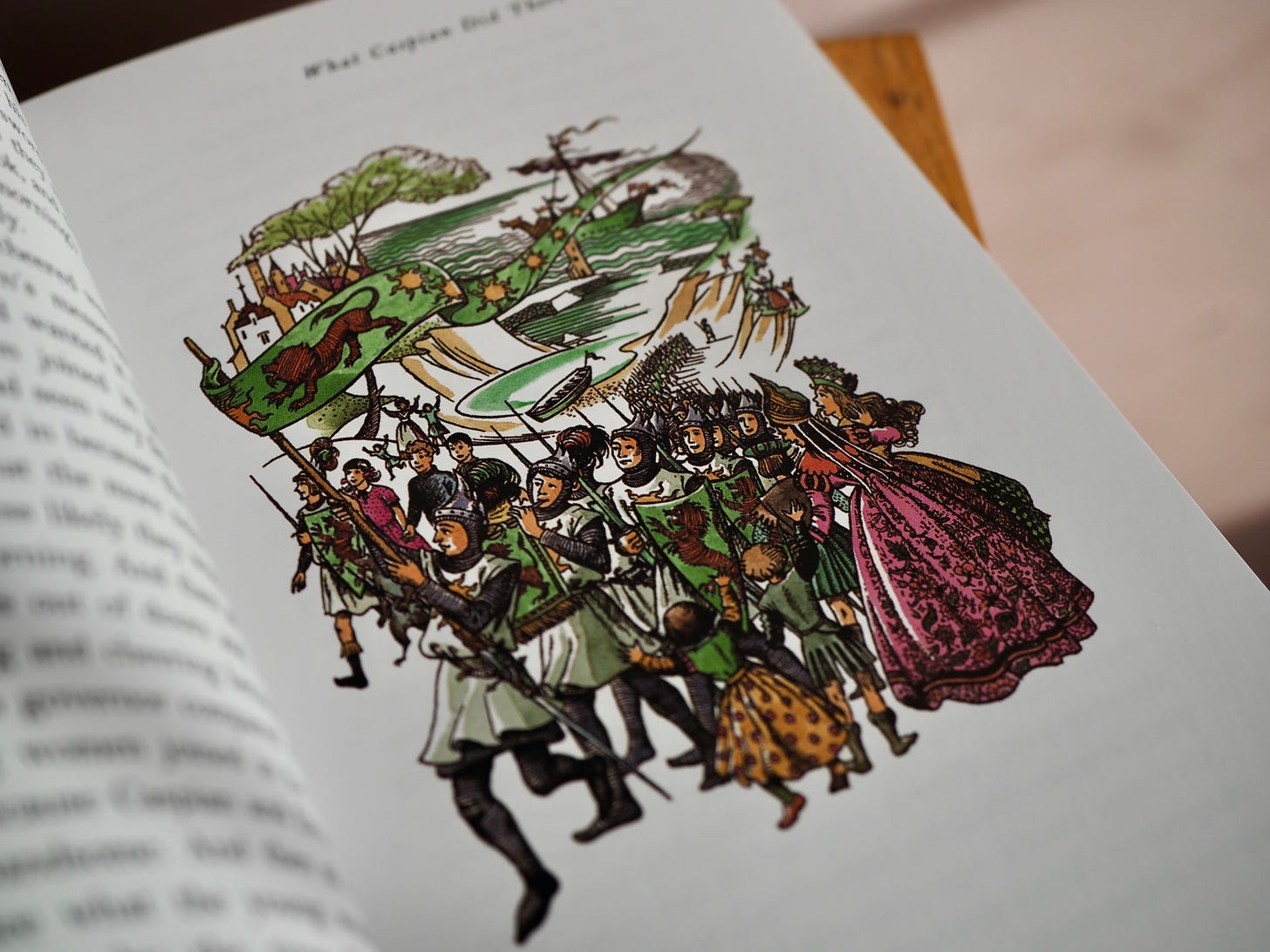
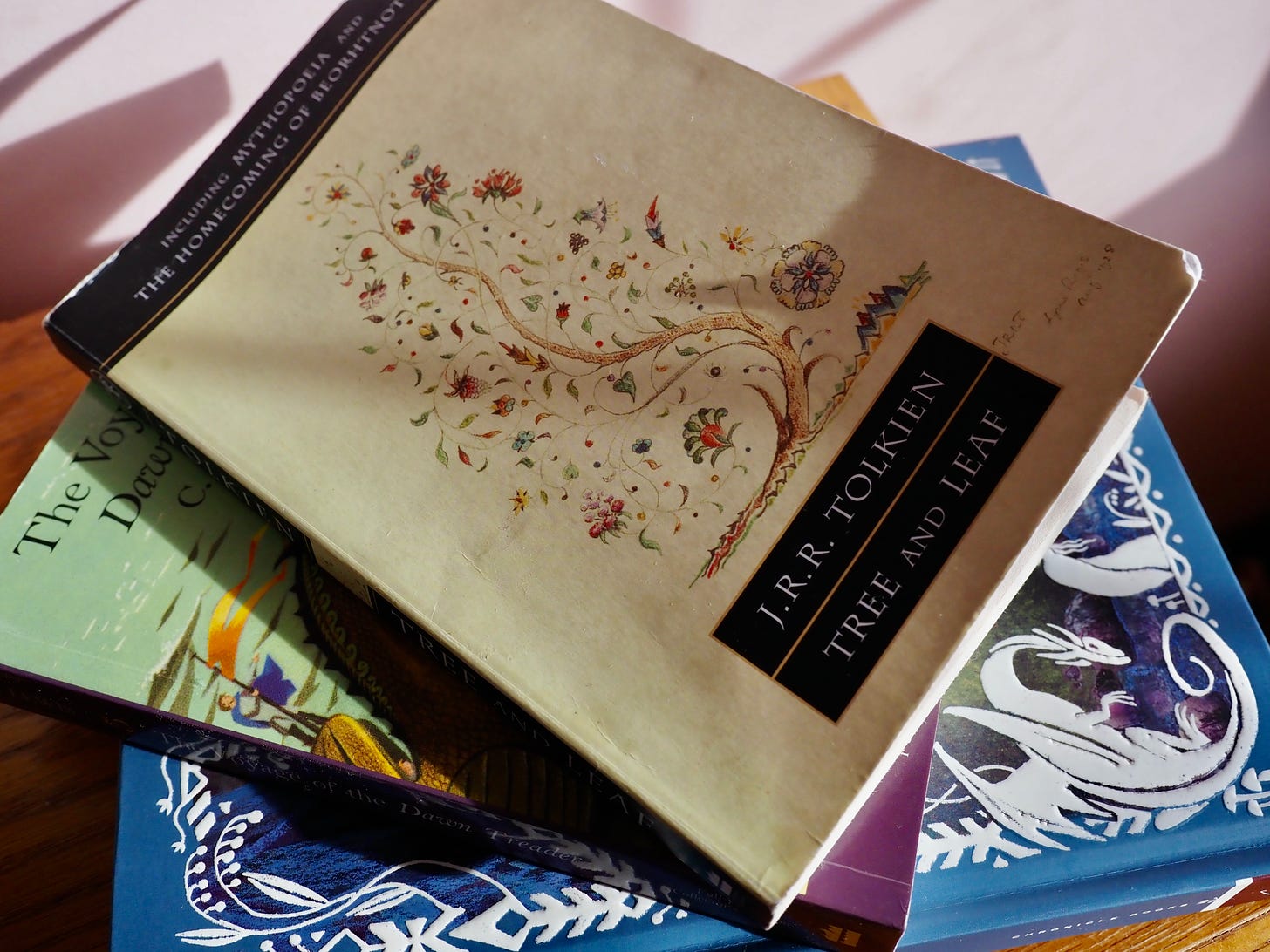
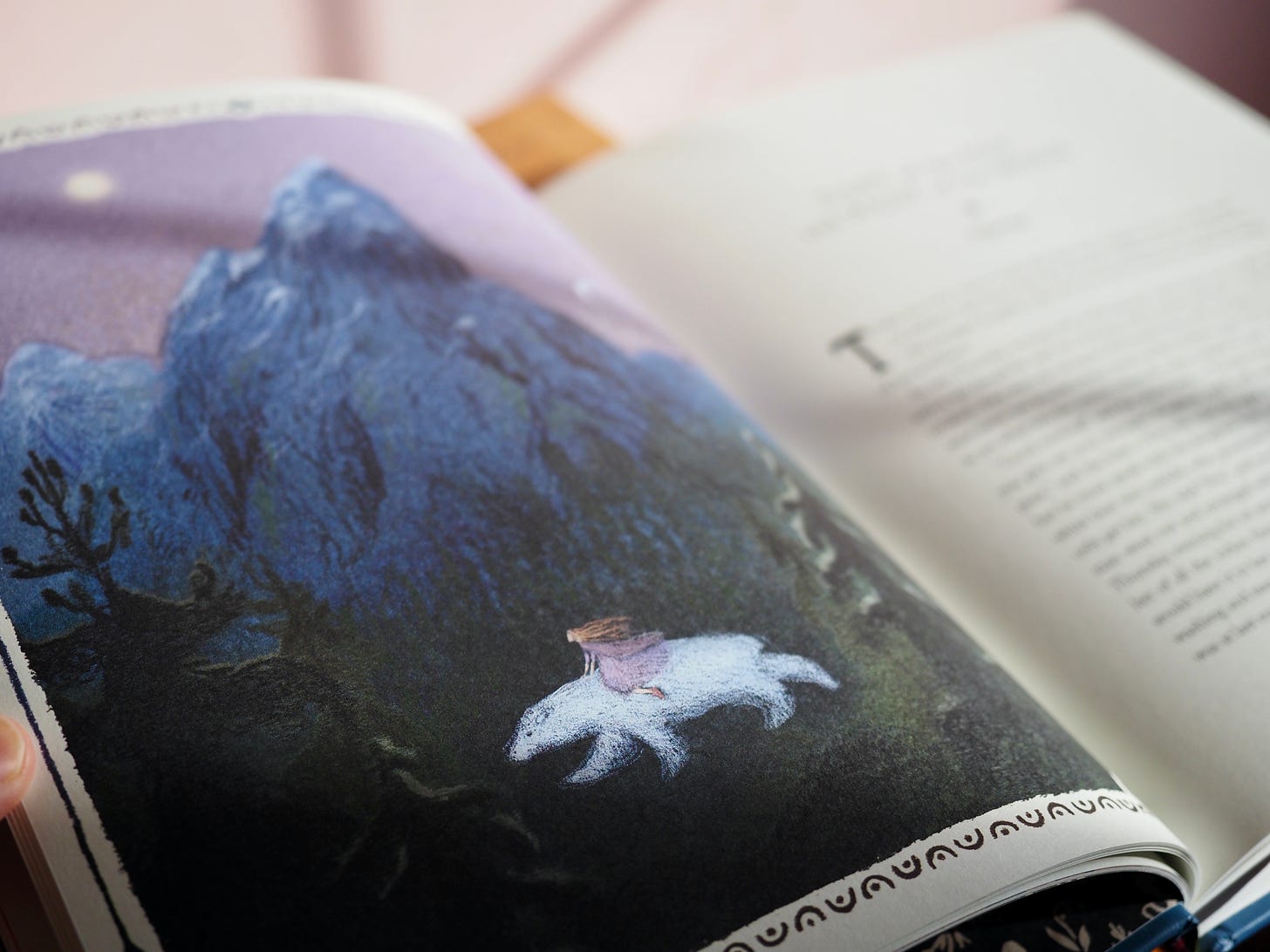





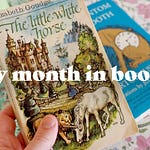

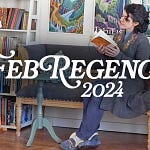








My Month in Books: What I Read in November